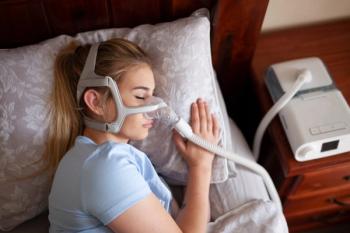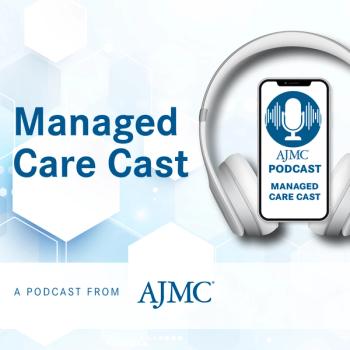
Cefdinir Nearly Doubles Outpatient Uncomplicated UTI Treatment Failure Compared With Cephalexin
Key Takeaways
- Cefdinir showed nearly double the treatment failure rate compared to cephalexin in outpatient uUTI management.
- Cefdinir's lower bioavailability and urinary excretion contribute to its reduced efficacy in treating uUTIs.
Cefdinir is linked to nearly double the outpatient uncomplicated UTI treatment failure of cephalexin, with higher recurrence and increased resistance to other cephalosporins.
Cefdinir was independently associated with treatment failure in the outpatient management of
Oral Cephalosporins in uUTI Management
Although the Infectious Diseases Society of America
Cephalexin, a first-generation oral cephalosporin, has approximately 90% bioavailability, with more than 90% of the active drug excreted unchanged in the urine. Previous studies have demonstrated its efficacy as a first-line therapy for UTIs, including complicated infections.
Cefdinir, a third-generation oral cephalosporin, has much lower bioavailability (about 20%), with less than 20% of the active drug excreted into the urine. Although some smaller studies have not shown inferior outcomes compared with more bioavailable cephalosporins, those analyses were limited by small sample sizes and short follow-up periods.
To address these limitations and clarify cefdinir’s role in outpatient uUTI treatment, the researchers conducted a multicenter, retrospective cohort study comparing clinical outcomes among adult female patients prescribed either oral cephalexin or cefdinir. Eligible patients included those diagnosed with uUTI or acute cystitis across Trinity Health Michigan outpatient facilities between January 1, 2020, and September 30, 2024, who received either 300 mg of oral cefdinir or 500 mg of cephalexin twice daily for 5 to 7 days.
The study’s primary objective was to compare the treatment failure rates of cefdinir and cephalexin. Treatment failure was defined as persistent symptoms or the need for additional therapy during the initial 5- to 7-day treatment course, as well as recurrence of symptomatic UTI requiring treatment within 30 days of therapy completion. Among patients who experienced treatment failure, the researchers assessed retreatment characteristics, including repeat culture results and cephalosporin resistance.
Cefdinir Linked to Higher Treatment Failure, Resistance in Outpatient uUTIs
Of the 2307 patients screened, 367 met the inclusion criteria. Among these, 200 received cephalexin and 167 received cefdinir; patients in the cefdinir group were significantly older (median age, 67 vs 52 years; P < .001). Urgent care and emergency department (ED) providers were more likely to prescribe cefdinir than primary care providers (97% vs 75.5%; P < .001), whereas primary care providers more often prescribed cephalexin (24.5% vs 3%; P < .001).
Patients treated with cefdinir experienced significantly more treatment failure within 30 days compared with those treated with cephalexin (23.4% vs 12.5%; P = .006). Treatment failure rates during the initial treatment course were similar between groups (cefdinir, 1.8%; cephalexin, 1%; P = .663), but patients taking cefdinir had a significantly higher rate of recurrent symptomatic UTI requiring retreatment within 30 days (21.6% vs 11.5%; P = .009).
A multivariate logistic regression model also found that uUTI treatment with cefdinir was independently associated with treatment failure (OR, 1.9; 95% CI, 1.1-3.4). Additionally, patients who experienced treatment failure while taking cefdinir had a higher incidence of cefazolin (37.5% vs 0%; P = .024) and ceftriaxone (31.2% vs 0%; P = .053) nonsusceptible pathogens on repeat culture, indicating resistance to these cephalosporins.
Rethinking Cefdinir Use in Outpatient uUTIs
The researchers acknowledged several limitations, including reliance on the accuracy of electronic medical record (EMR) documentation, particularly regarding urinary symptoms, adherence, and adverse drug events. Although their EMR network connects with several health systems in the area, patient follow-up for treatment failure or adverse drug events that occurred outside those systems may have been underreported.
Despite these limitations, they expressed confidence in their findings and advised clinicians to avoid prescribing cefdinir for outpatient uUTI treatment.
“Caution should be used with cefdinir in the treatment of UTIs, and consideration of alternative cephalosporins with greater bioavailability and urinary excretion over cefdinir should be prioritized,” the authors concluded.
References
- Mitzner TM, Eid KM, Hughson DM, Jameson AP, Dumkow LE. Cefdinir versus cephalexin for the treatment of uncomplicated urinary tract infections. Open Forum Infect Dis. 2025;12(10):ofaf501. doi:10.1093/ofid/ofaf501
- Gupta K, Hooton TM, Naber KG, et al. International clinical practice guidelines for the treatment of acute uncomplicated cystitis and pyelonephritis in women: a 2010 update by the Infectious Diseases Society of America and the European Society for Microbiology and Infectious Diseases. Clin Infect Dis. 2011;52(5):e103-e120. doi:10.1093/cid/ciq257
- Kaye KS, Gupta V, Mulgirigama A, et al. Antimicrobial resistance trends in urine Escherichia coli isolates from adult and adolescent females in the United States from 2011 to 2019: rising ESBL strains and impact on patient management. Clin Infect Dis. 2021;73(11):1992-1999. doi:10.1093/cid/ciab560
Newsletter
Stay ahead of policy, cost, and value—subscribe to AJMC for expert insights at the intersection of clinical care and health economics.







































